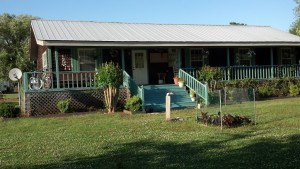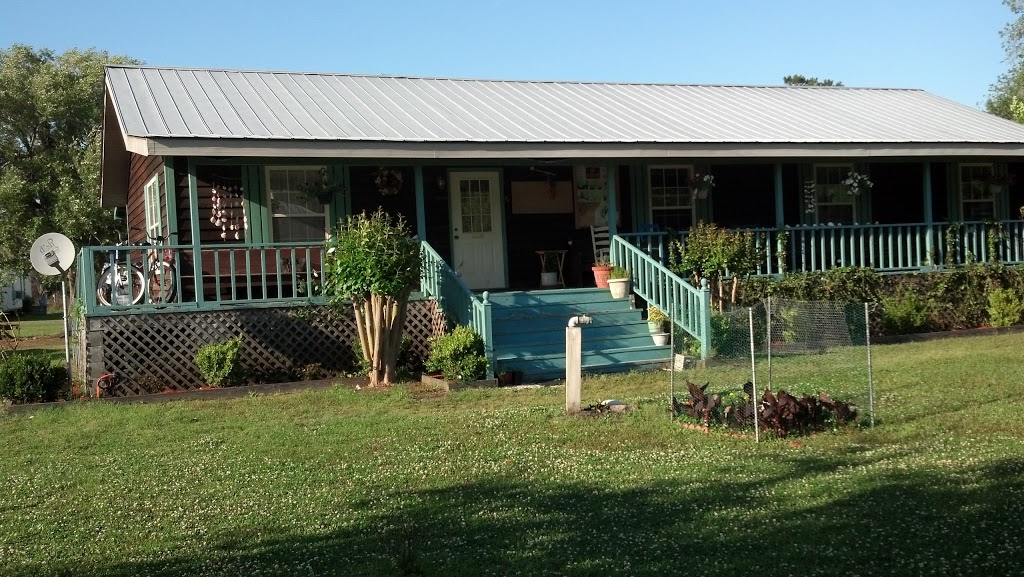Last month (May 18, 2013) the New York Times reported on the sale of a house on Edisto Island to the new Smithsonian National Museum of African American History and Culture. Once a slave cabin on the Point of Pines Plantation, it will be reconstructed as part of an exhibit titled Slavery and Freedom in the museum, which is scheduled to opens its doors in 2015. According to the article, the building is in a remarkable state of preservation.

But for an even more remarkable preservation story, head south on Interstate 95 and take one of the three ferries a day to Sapelo Island. The 16,500-acre Sapelo Island, the fourth largest barrier island of Georgia, is 97% owned and managed by the state’s natural resource agency. However, the other 3% is the community of Hog Hammock whose residents can trace their lineage back for over two centuries. If you are lucky, you can book a room at the Wallows Lodge.
Built and operated by community residents Cornelia Walker Bailey and Julius Bailey, the Wallows offers more than a place to stay on the island. It offers a seat on the porch in the center of living landscape. Cornelia Walker Bailey, who was born and educated on Sapelo Island, is the community historian. Her book God, Dr. Buzzard, and the Bolito Man (New York : Doubleday 2000) is a already considered a classic cultural memoir of Geechee culture. My husband and I enjoyed the Wallow’s hospitality for two nights in May (2013). We were fortunate to be there for the 147th Anniversary of the First African Baptist Church just down the road and blessed to attend the morning service. Best of all we sat on the porch of the Wallows and enjoyed ourselves.
These special occasions continue to call people back to Sapelo Island. The population of Hog Hammock almost doubled the weekend we visited, but by Monday morning most of the crowd had departed. The five children living on the island were all on the 7 AM ferry headed to school on the other side. Although the locally owned Wallows Lodge, catering for visitors, and island tours offer some economic opportunities, the community’s aging population continues to dwindle. To help preserve and revitalize Hog Hammock, the residents have formed a non-profit corporation known as the Sapelo Island Cultural and Revitalization Society (SICARS). Through the efforts of SICARS, the Hog Hammock Historic District of Sapelo Island was entered into the National Register of Historic Places in 1996. The organization also sponsors a well-attended cultural festival every October.
The gradual attrition of population is a long-term problem, but the community now faces a more immediate threat. Last fall property tax reassessments by Macintosh County raised the tax bills of Hog Hammock residents by as much as 500%. Appeals have been filed, but the future is still uncertain. The loss of real estate particularly in valuable costal locations is a recurrent theme for the larger Gullah Geechee community. Communities in places like Hilton Head and St. Simmons Island have been overrun by the development of upscale resorts and gated communities. Other islands like Cumberland Island are protected lands set aside for nature conservation. Today a living traditional community like Hog Hammock is the most rare and endangered place of all.
The Management Plan for the Gullah Geechee Cultural Heritage Corridor devotes a whole section to the topic under the chapter Land Ownership and Land Cover (Pages 96-101). However, implementation of the management plan, approved by the Secretary of the Interior on May 6 of this year, is just getting underway. Partners from the National Park Service and both historic preservation and land conservation organizations should be called upon to help conserve this part of our past before it is too late.
To see some wonderful recent photographs by a student at the Savannah College of Art and Design who also enjoyed staying at the Wallows: Visit Annelsie Moore’s Portfolio.



